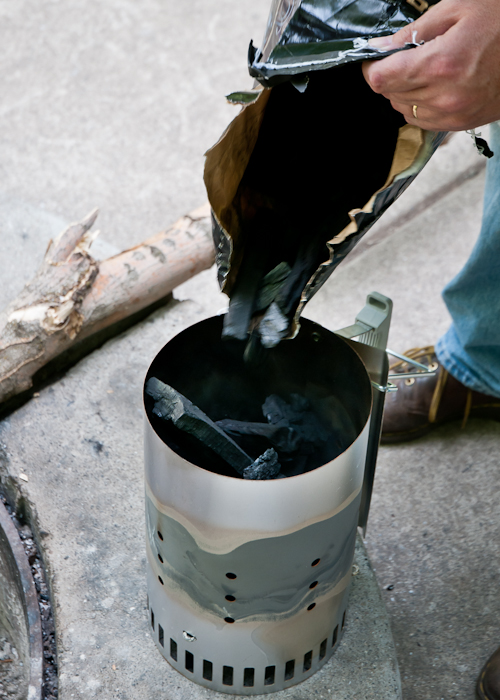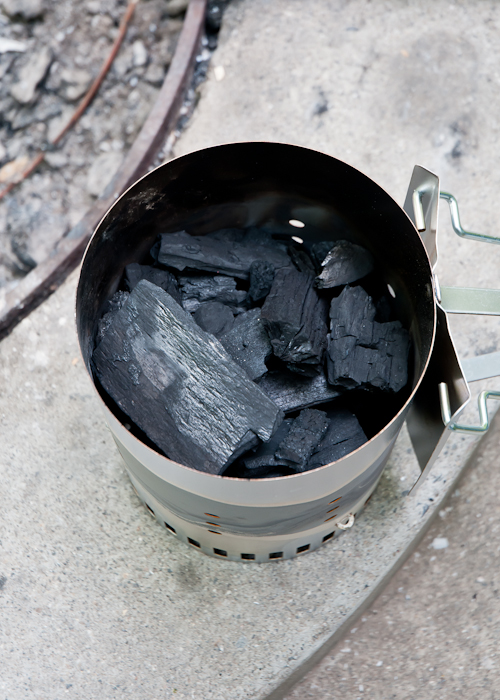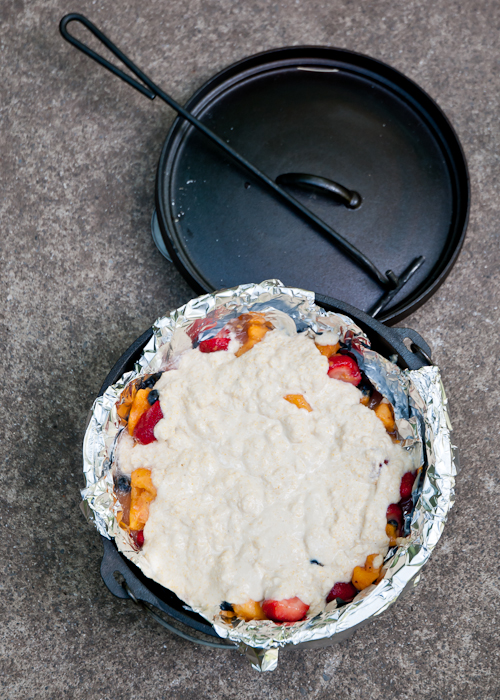This is an amazing article. Make sure you go to her site for more information!
Images and text by Lindsey Johnson for Design Mom.
Are you ready for another installment of our Outdoor Cooking series (here’s part one)? I am too!
Cooking in a Dutch oven is one of life’s pleasures, I think. It’s hard to duplicate the feeling of cooking outdoors in a big, cast-iron pot over hot coals. It’s hard to duplicate that flavor too — a cross between cooking over a fire and using a slow cooker. I love it (if that wasn’t already obvious). :)
Dutch ovens have been around for years and years and years. Now that most of us do our daily cooking indoors on and in modern stoves and ovens, it seems like Dutch oven cooking is more for hobbyists and campers. If you haven’t enjoyed Dutch oven cooking as the cook or the eater, you’ve been missing out! It’s a lot of fun.
Cooking with a Dutch oven might seem a little intimidating or complicated. I totally get that! But what you put into the Dutch oven is pretty simple and uncomplicated; the cooking part is where it can get a little tricky. There’s a bit of a learning curve to get the timing and temperature just right, but once those two things are covered, you’ll be set.
You can cook or bake practically anything in a Dutch oven — they are incredibly versatile. Over the years we’ve modified old family favorites for use in a Dutch oven as well as finding new ones.
So, it’s time to pull out your favorite recipes and a pen and paper to take some notes!
You will want to purchase or borrow a few things to get ready for your Dutch oven cooking adventures. You don’t need a ton of equipment, but there are a few essentials that you don’t want to be without. I’m listing them here and will cover each in a bit more detail as we go along.
-One or two Dutch ovens (or more if you’ve got a crowd!)
-Charcoal chimney starter
-Charcoal briquettes
-Something to put the lid on (a muffin tin works well)
-lid lifter
-high heat resistant gloves
-straw broom
-lighter fluid (optional, not pictured)
DUTCH OVENS AND PREPARATION
As with anything, cooking with Dutch ovens does require a some planning and preparation. Secret #1: You should buy a Dutch oven a little before you plan on using it to make sure you have time to properly season it. A well-seasoned Dutch oven makes for happier cooking and cleaning up. Seasoning means that it’s been rubbed with oil or vegetable shortening and baked in an oven for a few hours to develop a nice, black coating on the surface of the entire Dutch oven. It will become further seasoned as you use it, eventually becoming nonstick.
Treat Dutch ovens as you do cast iron skillets and pans. If you’ve used those, it’s the same process for seasoning and care. There are aluminum Dutch ovens available, but the most common ones sold and used are cast iron. That’s what we’ll be talking about in this post.
Dutch ovens come with heavy lids that provide a good seal during cooking. Because the Dutch ovens are made of heavy cast iron, they retain heat very well. In fact, they can stay warm for hours and hours after cooking. Dutch ovens are best used for recipes requiring a long, slow cooking time, like stews, roasts, chili, etc. But they can also be used for things that cook in 30 minutes or less, like quick breads, rolls, cakes and cobblers. Dutch ovens lend great flavor to food from the oven itself and the charcoal briquettes. (You can’t get that from your indoor oven or a slow cooker!) Though I’m not covering the techniques in this post, dutch ovens are great for cooking bread and deep frying, as well.
Generally the cooking temperature will be about 350-400 degrees F. The cooking heat is generated from using coals placed underneath the pan and on top of the lid. You’ll see Dutch ovens with flat bottoms or with three little legs. The flat ones are better for indoor cooking. The ones with legs are the kind for outdoor use. I’m sure they were designed that way for other reasons too, but the little legs are nice because the Dutch oven keeps upright much better over the coals.
Let’s talk about the charcoal for a minute because it is such an important part of Dutch oven cooking!
CHARCOAL
For getting the coals hot, we prefer using a charcoal chimney starter.
The advantage of a charcoal starter is that you can get the coals started quickly and (usually) evenly. The tall chimney shape keeps the coals protected from wind and keeps them together as they heat up. I honestly would recommend investing in one if you do a lot of cooking with charcoal. Secret #2: The charcoal needs to be started about 20-30 minutes before you plan on starting to cook. If you use a charcoal starter, it might only take 15 minutes. I use that time to mix my ingredients together. By the time I’ve put everything into the Dutch oven, the coals are hot and ready to be used.
Directions for lighting charcoal:
Put charcoal in charcoal burner, drizzle with a little lighter fluid (optional, but helps to get it going quickly), the carefully add a lighted match.
The general rule of thumb is two charcoal briquettes per inch in diameter, and typically more coals are placed on top than on bottom. For example, a 12-inch Dutch oven would have 14 coals on top and 8 underneath for a temperature of about 300 degrees F. Secret #3: To raise the cooking temperature 25 degrees F, add an extra (preheated) briquette on both top and bottom.
Secret #4: The arrangement of the coals also matters. They need to be arranged evenly both top and bottom. Usually this is a circle around the perimeter with a few in the center. I’ve arranged them a little differently here because I was using the hard wood briquettes and they weren’t uniform in size.
Ovens can go almost anywhere to cook just about anything you want. This could be your backyard, a park, campsite, etc. Just make sure the surface is heat proof. Concrete works great as does dirt. You can use Dutch ovens in a fire pit or on a grill like the one in the picture. I chose to do it this way for this post because I liked that it was high off the ground — while my kids were running around and playing. It also made it easier for me to check on it. But we also like placing it in on the ground in a fire pit because we can cook other things over the coals at the same time. Either way works great!
Dutch ovens come in various sizes. The most common sizes are 10″, 12″ and 14″. They also vary in depth. The bigger (and deeper) the Dutch oven, the more people you can feed, and the heavier they are. Keep that in mind too. We usually use 12″ ovens to cover our basic cooking needs.
COOKING
Let’s talk a bit about the Do’s of Dutch oven cooking.
Secret #5: Do season it well and then rub the inside with a little oil every time you use it.
Even though the Dutch oven has been seasoned, it’s a good idea to rub the inside with a little oil before using it. I just pour a little in the bottom and use a paper towel to wipe the entire inside. The outside doesn’t need to be rubbed with oil again before cooking. Also, Dutch ovens don’t require preheating, so unless a specific recipe lists preheating as part of the instructions, you won’t have to worry about doing that.
Secret #6: Do line the inside with foil if you need to. Need to = if you’re cooking something especially sticky like fruit cobbler. Or, if you’re using acidic ingredients like tomatoes, lemon juice, wine, or vinegar, because they can remove some of the seasoned interior. To be honest, I usually don’t use foil with the acidic ingredients, but I am careful not to let the food sit in the dutch oven for too long after it’s done cooking. Note: It will take a little longer to cook if you line it with foil.
Some other quick Do not’s for Dutch oven cooking include Secret #7: Don’t ever pour cold water into a hot oven to cool it off, it will ruin it. Secret #8: Don’t drop it! They look indestructible, but they can break, or break your toe. : ) Secret #9: Make sure the lid is on properly and fits tightly so heat doesn’t escape. And don’t set the lid directly on the ground — use a pan, brick, or rock (I like using an upside down muffin tin) — it keeps dirt or other things from being transferred from the ground to your food. Secret #10: Don’t use plastic or silicone cooking utensils. Wood or metal only. Secret #11: When you’re finished cooking, do use the broom to clear the lids of ash so that it doesn’t get into the food.
Secret #12: If you have more than one Dutch oven, you can stack them. The coals on top of the bottom oven become the bottom coals for the top oven. Know that this will require more time and you might have to add fresh coals to keep it cooking hot enough for both ovens.
Secret #13: Timing depends on recipes, ingredients, and the size of the dutch oven. For example, with my Chicken Provencal stew (pictured in this post), I wanted to add some zucchini. Like with slow cookers, zucchini would disintegrate during a long cooking period. Add things that cook quickly near the end of cooking time. I added the zucchini about 30 minutes before the stew was ready. Start the ovens that takes the longest to cook first — desserts and ovens with just vegetables don’t take as long to cook. Also, you’ll need to add more time for deeper ovens.
Secret #14: As far as clean up goes, if the Dutch oven is well-seasoned, it will be a snap! It should just wipe out. (Toss any aluminum foil you might have used.) If the food was too messy to simply wipe out with a paper towel, use a little water or oil mixed with some salt. It will help scour the inside without damaging the seasoning. Let it dry thoroughly, then rub inside and out with oil.
Before we get to recipes, here’s one last rule of thumb I’ve found helpful, Secret #15:
If you can hear it, it’s hot enough.
If you can smell it, it’s probably getting close to being done.
RECIPES
I chose one of my favorite recipes to turn into a Dutch oven recipe — this Chicken Provencal is amazing! We usually do it in the oven or slow cooker. Happily it’s even more delicious in the Dutch oven! Stews do really well in Dutch ovens. We also made a Summer Fruit Cobbler.
Dutch Oven Chicken Provencal Stew
adapted from Big Girls, Small Kitchen
For one 12-inch Dutch oven, to feed 6-8
Ingredients:
3 lbs. bone-in chicken thighs, skin removed (can use boneless)
1 large onion, thinly sliced
1/4 cup red or white wine vinegar
1/4 cup chicken stock or white wine
1 small can tomato paste
3 Tablespoons brown sugar
3 Tablespoons olive oil
3 Tablespoons minced fresh garlic
1/4-1/2 cup chopped, pitted kalamata olives
5 large pitted dates, chopped
2 Tablespoons fresh oregano (or 1-2 teaspoons dried)
Salt and pepper, to taste
2 zucchini cut into 1/2″ rounds
6 whole roma tomatoes
Fresh parsley, for garnish
Instructions:
Combine all ingredients except zucchini and roma tomatoes in a gallon sized resealable plastic bag or large bowl covered with plastic wrap. Chill until ready to cook. (Can be done one day in advance.)
Rub the inside of the Dutch oven with oil. Place the entire contents of the bag or bowl into the oven. Arrange the chicken with a spoon or spatula so it is in an even layer. Place the Roma tomatoes evenly around. Place the lid on top.
Place 8 coals under the oven and 14 coals on top. Cook for about two hours or until the sauce has thickened quite a bit and the chicken is falling away from the bone. Add the zucchini during the last 30 minutes of cooking time. Garnish with fresh parsley and serve with crusty bread, potatoes, rice or couscous.
Dutch Oven Summer Fruit Cobbler
For shallow 12-inch Dutch oven, if using a deeper one, double the fruit and filling ingredients but keep the topping the same
Ingredients:
2-2 1/2 lbs. fresh or frozen peaches
4 cups fresh or frozen berries (I used strawberries and blueberries)
1 cup sugar (use a little less if your fruit is really sweet)
1/4 cup cornstarch
pinch salt
Topping:
1 1/2 cups all-purpose flour
1/2 cup stone ground corn meal (coarse or fine)
1/4 cup dry milk powder (omit if you use fresh milk instead of water)
2-4 Tablespoons sugar
1 Tablespoon baking powder
1/2 teaspoon salt
1 stick (8 Tablespoons) cold butter, cut into 8 pieces
1 1/2 cups cold water or milk (omit dry milk powder if using fresh milk)
Instructions:
For filling-
Mix cornstarch, sugar and salt together. Set aside until ready to assemble cobbler.
For topping-
Whisk all of the dry ingredients together. Add the cold butter and cut into the dry ingredients using a pastry cutter or your hands. The mixture will look like cornmeal with larger, pea-sized pieces of butter remaining. If making in advance, transfer to a large resealable plastic bag or cover bowl with plastic wrap. Chill until ready to make the batter.
To assemble:
For filling-
In a large bowl mix all of the fruit with the cornstarch and sugar. Let stand for a few minutes to allow sugar to dissolve. Transfer to the Dutch oven. (Can line with foil because it will be sticky!)
For topping-
Add the cold water or milk to the bag or bowl and mix just until combined. Pour over the fruit. Put lid on top and use 8 coals on bottom and 14 coals on top. Cook for about 30 minutes or until the juices are bubbling and the top is golden brown.
Serve warm with whipped cream or ice cream. Makes about 8-10 servings.
Now, I’m dying to know. Have you ever cooked with a dutch oven? Or eaten a dutch oven meal? What’s your take? Worth the extra effort? And if you’re a dutch oven expert, please add your secrets.
Here’s to outdoor cooking!
P.S. — Love secrets? Find all the posts in the Living Well series here.
























